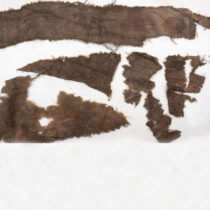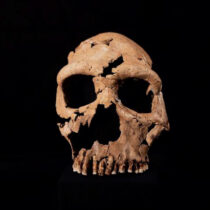The Holy, Imperial, Patriarchal and Stavropegic Monastery of the All-Holy Mother of God of Soumela, the Most Reverent Relic of Pontic Hellenism.
After 1071, when the last free territories were confined to the mountainous Pontos, the cave inhabitants of Mount Mela and the people of Upper Matsouka lived among the Seljuk Turks, the Tourkomans and the Mongols of the Grand Komnenoi, and when the enemy retreated, the emperors rearranged the defense of the mountain, built castles and strengthened the ascetic city of Mount Mela by founding a well organized monastic center, able to control the pathways to Kromna and the belligerent border.
The second prosperous period in the history of the Monastery of Soumela, during the seventeenth to eighteenth centuries, is associated with the opening of the famous mines of Pontos, located on the south slopes of the Pontic Alps, where Gümüshane-Argyroupolis, the City of Silver was founded.Spiritual and financial relations between the master miners and the monastery were continuous and very strong. The Monastery of Soumela is now ruined. However, the visitor will find dozens of holy figures painted on the external walls of the rock-hewn church and of the nine chapels which gradually climb up to the top of the cave. The dilapidated plaster covering the walls is decorated with paintings dating from 1686, 1712 and 1744.
The role the Monastery played in the cause of Orthodoxy and Hellenism during the Ottoman period is too important to be correctly evaluated. Even today, on the eve of the feast of the Dormition of the Virgin many Turks set off in groups from all the villages of the Pontic Alps to come and venerate the Mother of God in the «Mariemana Monastir».
Sevastos Kyminitis and the Educational Institutions in Trebizond and Bucarest
Sevastos Kyminitis, the most eminent educationalist in Pontos and Wallachia in the late seventeenth century, originated from the Trapezuntine village Kymina. In 1683 he founded the Phrondistirion of Trebizond, an institution for grammar and humanistic studies. Six years later he was appointed director of the Greek Phrondistirion of Bucarest, operating in the Monastery of St Savvas. Furthermore, the Trapezuntine teacher was the first professor in the Princely Academy of Bucarest (Iasion).

